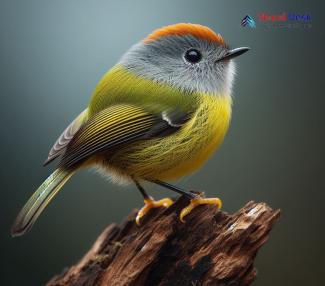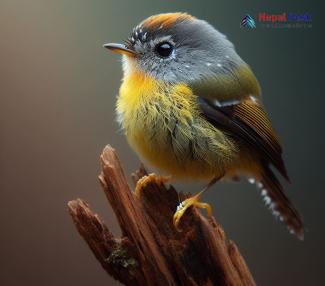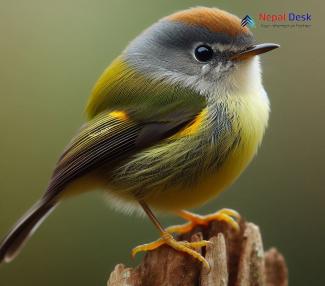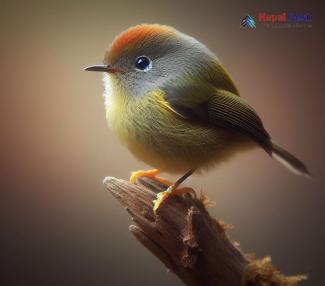The Broad-billed Warbler (Tickellia hodgsoni) is a fascinating bird species that manages to capture the attention of bird enthusiasts and casual observers alike. In this article, we will delve into the taxonomy and physical features of this beautiful bird, discuss its habitat and diet, and touch on its breeding habits and nesting. Lastly, let's explore its presence in Nepal.
Taxonomy and Physical Features
The Broad-billed Warbler belongs to the Phylloscopidae family and the scientific name is Tickellia hodgsoni. The species has a distinctive broad bill compared to other warblers. It has an overall olive-green coloration with yellowish underparts. The head is graced with a prominent pale-yellow eyebrow stripe or supercilium, which stretches from the bill to the sides of their necks making them easily identifiable.
Habitat and Diet
The Broad-billed Warbler thrives in moist broadleaf forests at elevations ranging from 900 to 3,000 meters above sea level. The dense vegetation provides ample opportunity for them to forage effectively while remaining camouflaged from potential predators. Their diet consists mainly of insects such as moths, flies, beetles, and sometimes small spiders as they glean through leaves and branches.
Breeding and Nesting
The breeding season of the Broad-billed Warbler typically occurs between April and August when they engage in melodious songs claiming territories or luring mates. During this time, the male will engage in impressive courtship displays which involve fluffing up their plumage and widely fanning their distinctive tail feathers.
Nests are meticulously constructed using grasses, leaves, and mosses with a tidy cup shape concealed within dense vegetation. Females lay 2 to 4 small, pinkish-white eggs speckled with brown markings, which are then incubated by both parents for a period of 12-14 days. Once hatched, chicks are fed insects until they fledge and gain independence in just a few weeks.
Presence in Nepal
Nepal's diverse and rich ecosystems provide suitable habitats for the Broad-billed Warbler. The bird can be found along the country's mid to high-elevation regions where the ideal moist broadleaf forests are abundant. The Annapurna Conservation Area, Langtang National Park, and various community forests in Nepal offer birdwatchers ample opportunities to observe this enchanting species within their natural habitat.
In conclusion, the Broad-billed Warbler (Tickellia hodgsoni) is an intriguing bird species with awe-inspiring physical features and engaging behavior. With its vibrant presence in Nepal's dense forests, it continues to captivate both local bird enthusiasts and international visitors alike. As we continue to study and appreciate this exceptional species, it is vital to protect its natural habitats ensuring its continued survival for generations to come.




